Can the internet be used by serious painters to consistently sell their work, build a reputation and connect with collectors without the help of a "brick and mortar" gallery? It is a question many artists have been asking for some time, but very few have real found that the answer is a clear "yes." Artist Duane Keiser is one of them.
Keiser realized early -- in 2004 -- that the internet was "going to fundamentally change the relationships between artists, galleries and collectors." He acted on that realization, and the result has been a practice that he calls a "Painting A Day." Now, more than 8 years later, he feels that eBay is a "natural way to sell art" and both his artistic practice and his bank account are in good shape. I recently interviewed Duane via email, and he took his time to give me a thoughtful, and inspiring interview.

Duane Keiser
John Seed Interviews Duane Keiser:
JS: How did "painting a day" get started? When did it start?
DK: I have always made small, mostly premier-coup paintings of places I know and things I see. The "painting a day" concept developed when I started thinking about ways to present and sell some of my work outside of the gallery system. In the early 2000s, after years of showing my work in galleries, I decided to have a one-night show in my studio. I installed makeshift track lighting and hung one hundred of what I began calling my postcard paintings (postcard-sized oil sketches) priced at $100 each. It was a great night. We had lots of wine and a small band and it was really more of a party, but it turned out to be tremendously successful. Most of the paintings sold, my email list grew and most important, I got to know the people who bought my work.
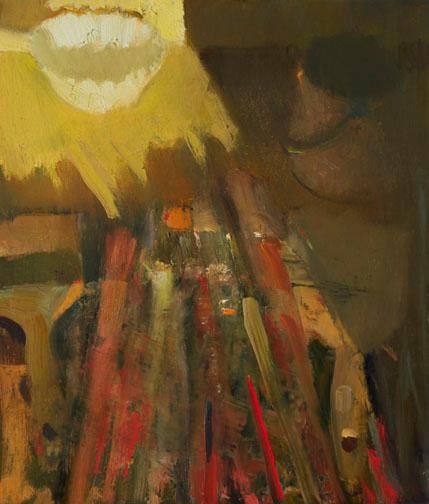
After several more of these one-night shows, I started offering pieces for sale via email on a first-come, first-served basis. In 2004, I launched the blog. At the time, blogs were mostly associated with journalistic writing. But the simple, diary-like format seemed a perfect fit for what I was doing. I called it "A Painting a Day" and I arranged my life so that it was possible to make a painting every day (which I did for about a year and a half before slowing down.) I carried a cigar box easel wherever I went and when something caught my eye, I would stop in my tracks to paint it. It's one thing to paint every day. It's something else entirely to make a complete painting every day, despite travel, illness, holidays, etc. My family and friends got used to seeing me marked with paint or not seeing me at all.
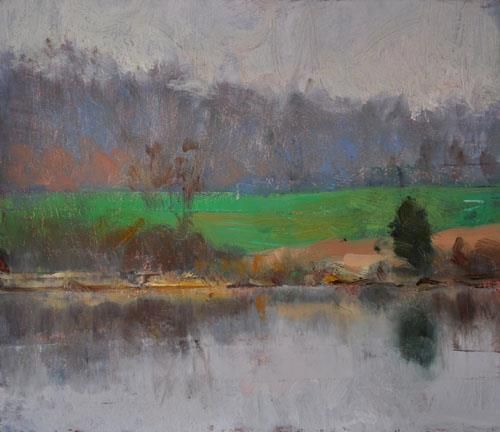
Luck's Farm (no.12,) 1/12/2013
oil/paper (mounted) 6"x7"
After a few posts, the excellent Boingboing.net did a small article about my project and almost overnight, I had an international following. I often tell the story about the morning I made a painting of an egg in my kitchen and posted it to my blog. Five minutes later, I received an email from a fellow in India telling me how much he liked it. The idea that I could paint a small vignette in Richmond, Virginia and almost instantaneously share it with someone on the other side of the globe was a miracle to me.
At that moment, I realized the internet was going to fundamentally change the relationships between artists, galleries and collectors. Articles about me or about the idea began appearing in publications like USA Today and The New York Times. Other artists began to use the idea and link their projects to my blog. I learned first-hand what it meant to go viral.
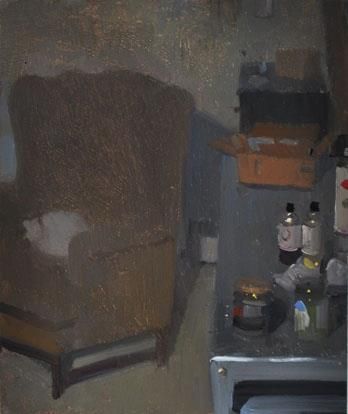
In 2005, Gregory Peterson, a friend and collector of my work, suggested I try online auctions. I eventually got the same advice from an eBay executive. I hesitated because at the time, eBay was considered an online yard sale--definitely not a marketplace anyone considered for selling fine art. After thinking about it more, I realized my collectors would see it for what it was, a simple and trustworthy meeting place for sellers and buyers. So I tried it.
I can't tell you how strange it sounded when I told people I was selling my work on eBay, but as my prices began to rise, I realized it was working. The auction format allowed my collectors time to consider how much a painting was worth to them and whether or not they wanted it. My collectors liked the excitement of watching and participating in auctions. Now, eBay seems like a natural way to sell art.
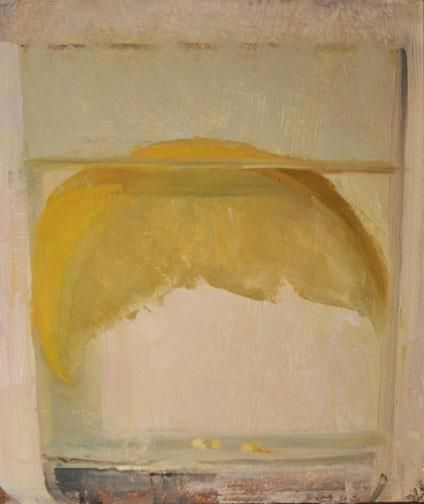
Looking back, I realize I was a small part of a growing movement of artists--mostly musicians--who decided to buck the traditional sales and marketing system and reach fans through the internet. Back then, artists of all varieties relied almost entirely on corporate entities (publishers, record companies, movie studios, galleries) to promote and sell their work. To do so any other way was risky. Now there seems to be a more mutually beneficial relationship between those traditional middlemen and artists who want to develop a direct relationship with their fans. The comedian Louis CK is a great example of this.
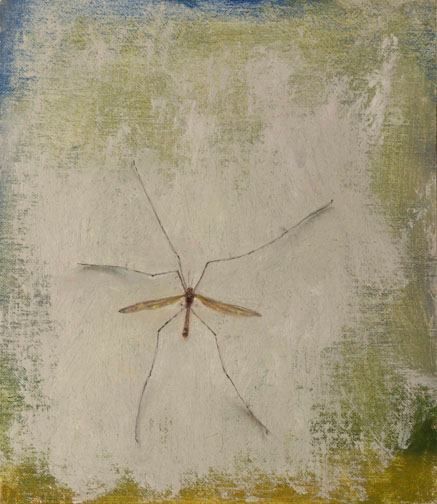
JS: Can you give me some stats for painting a day? How many years? How many paintings? How many sold? The top price? The lowest price?
DK: The blog was launched in 2004. I've posted about 1,300 daily paintings since then. All but a handful have sold. The highest selling price was around $1,500; the lowest was $79.
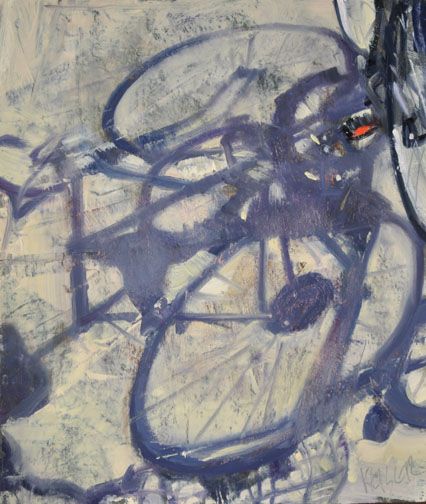
JS: How has your painting a day practice affected your development... and your other paintings?
DK: While it has certainly given me a degree of proficiency, the more I paint the harder it seems to get. The paintings I make for "A Painting a Day" are mostly premier-coup ("first strike") which means they are usually done in one sitting. I hesitate to use this term because I feel little kinship with the slickness I see in a lot the premier-coup and plein air painting being done these days. The ideal that I strive for is that of making a raw expression of a moment or sensation rather than a polished picture. I emphasize "strive" because it is a goal that is always a little beyond my grasp which is why I find this kind of painting so humbling and endlessly challenging.
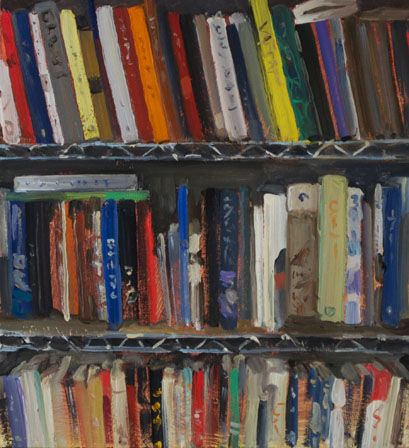
A premier-coup painting often teeters on the edge of being something and being nothing-- the picture works and then, a few brush strokes later, it doesn't. It requires a kind of letting go; a reliance on instinct and intuition. My first painting classes with Raymond Berry began by making several small paintings on small sheets of paper taped to a board. The size and time restrictions forced us to be simple, direct and focused but also gave us license to experiment and make mistakes. If it didn't look right, we wiped it off (or he wiped it off for us) and we'd try again.
We were learning how to start a painting. We were also being introduced to what Zen Buddhists call a beginner's mind: an openness to new possibilities. My daily painting keeps me moored to that sensibility. It informs all my work.

JS: Tell me about the range of your subject matter. Do you have some recurring/favorite subjects?
DK: I've always been drawn to subjects that, though interesting or beautiful, tend not to illicit internal commentary or labeling because they are so fleeting, fragmentary or prosaic. I try to have what the photographer William Eggleston referred to as the "democratic way of looking around" and be open to whatever strikes me. As such, my subject matter varies wildly. I am also partial to subjects that naturally cross my path or enter my life rather than those I seek to paint. I suppose there is a kind of serendipity about that which I enjoy but it also keeps my paintings connected to the ebb and flow of my life. I view "A Painting a Day" as a single, ongoing work that, for me, has an underlying component of time; a sense of moments coming and going. This is one reason I accompany the title of each painting with the day it was finished.
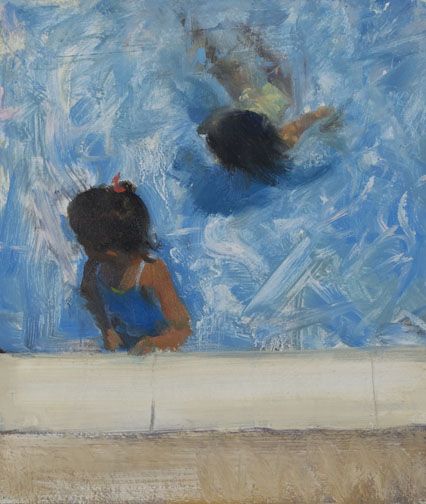
JS: How do people respond to painting a day? How important is it for you, and do you feel that it will continue a long time?
DK: Generally, people seem to understand and appreciate the idea behind PAD, even if the work isn't always their cup of tea. Certainly the notion of standing still and being aware of one's surroundings is viewed by most as a poetic respite from the technological bubble we spend much of our time in. In some ways I actually prefer to present this work online, rather than in a gallery, because it seems appropriate that paintings of the everyday be threaded into the everyday lives of my viewers via their computers, tablets and smartphones. While I do receive a lot of feedback at times (mostly positive, sometimes negative) by and large most people simply look and (hopefully) enjoy the work.
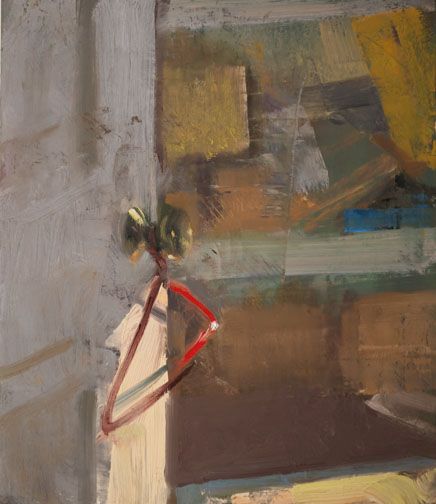
JS: What is the social aspect of making so many paintings? A ton of friends? A ton of admirers? Imitators? Detractors?
DK: Yes, I do have a lot of admirers and collectors of my work-- certainly more than I ever thought I would. The people who follow my work have been tremendously kind and encouraging (as have my fellow painters) and I feel a tangible connection to them even if I do not know most of them personally. Obviously, part of this connection stems from the fact that I am sharing a constant stream of vignettes from my life, but it is also because they are, in essence, in my studio looking over my shoulder as I paint. They see my different approaches, the experimentation, the wrong turns, the small discoveries or breakthroughs etc. In PAD, a subscriber to my mailing list has a sense of how a particular painting came to be, good or bad, because he or she saw the fifty paintings that preceded it.
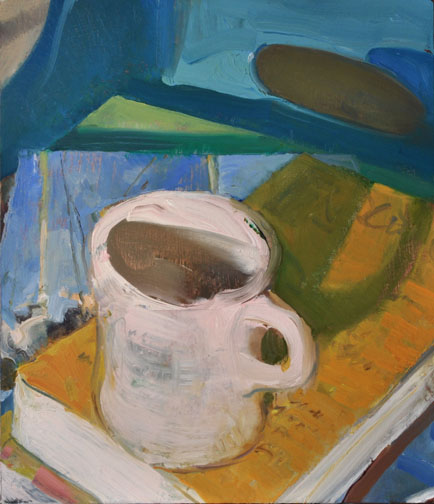
And yes, there have been a lot of imitators of "A Painting a Day." In the beginning I encouraged other painters to try some version of the idea and adapt it to their own work. While I was happy to see the enthusiasm and success of painters starting to grasp the potential of the internet for themselves, I was also dismayed to see the movement become a kind of echo chamber of subject matter and styles, with painters looking within the small community of other daily painters for ideas rather than at what was around them. Indeed, some painters copied work almost verbatim.
There are a handful of painters who made the idea their own and whose work I truly admire, but for the most part daily painting, as a movement, is not something I follow much anymore. I certainly have detractors. I don't know how many. Their main criticism is that the subject matter is banal or that I don't paint it well enough to lift it above the level of being banal. Obviously, I don't agree that the subject matter is banal. I can understand the opinion that my painting may not be good enough because it's a criticism I direct at myself from time to time.
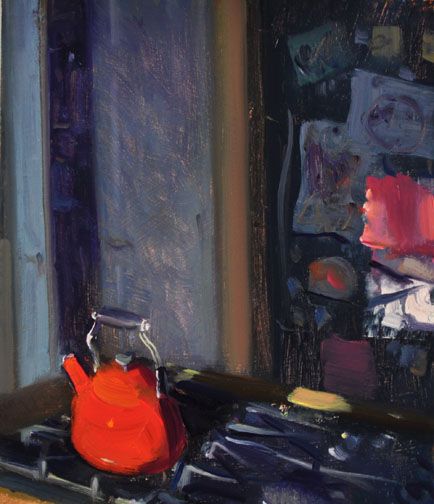
JS: Is there a philosophical and/or spiritual side to painting a day?
DK: For most of my adult life I've studied a strict and traditional form of karate (Shotokan Karate of America.) My understanding and philosophy of daily practice comes from the practice of Shotokan, which includes repeating a technique or kata many thousands of times and setting goals that seem beyond one's capabilities.
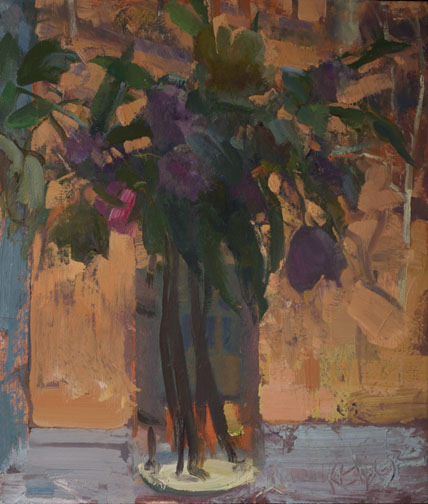
Winter Bouquet, 2/14/2013
Daily painting is woven into my life and has become a kind meditation for me; a way to practice being in the moment and appreciative of what I have. Pilgrim at Tinker Creek by Annie Dillard has had a big influence on me. This passage in particular shaped the way I approach "A Painting a Day:"
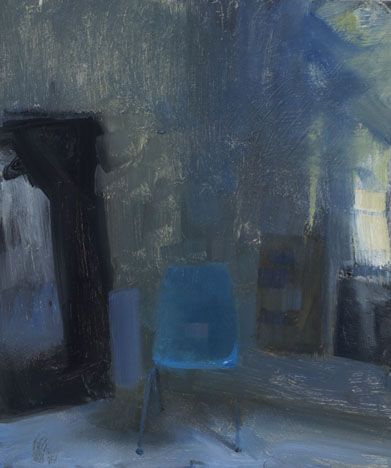
Links:
Duane Keiser's "Painting a Day" blog.
Keiser realized early -- in 2004 -- that the internet was "going to fundamentally change the relationships between artists, galleries and collectors." He acted on that realization, and the result has been a practice that he calls a "Painting A Day." Now, more than 8 years later, he feels that eBay is a "natural way to sell art" and both his artistic practice and his bank account are in good shape. I recently interviewed Duane via email, and he took his time to give me a thoughtful, and inspiring interview.

JS: How did "painting a day" get started? When did it start?
DK: I have always made small, mostly premier-coup paintings of places I know and things I see. The "painting a day" concept developed when I started thinking about ways to present and sell some of my work outside of the gallery system. In the early 2000s, after years of showing my work in galleries, I decided to have a one-night show in my studio. I installed makeshift track lighting and hung one hundred of what I began calling my postcard paintings (postcard-sized oil sketches) priced at $100 each. It was a great night. We had lots of wine and a small band and it was really more of a party, but it turned out to be tremendously successful. Most of the paintings sold, my email list grew and most important, I got to know the people who bought my work.

Brushes and Coffee Filter, 1/7/2013
oil/paper (mounted) 7"x6"


Gesso Sleeping, 10/30/2012
oil/paper (mounted) 6"x5"

Floating Lemon Wedge, 2/20/2013
oil/paper (mounted) 7"x6"

Crane Fly, 5/18/2012
oil/paper (mounted) 7"x6"
DK: The blog was launched in 2004. I've posted about 1,300 daily paintings since then. All but a handful have sold. The highest selling price was around $1,500; the lowest was $79.

Bikes, 2/9/2013
oil/paper (mounted) 7"x6"
DK: While it has certainly given me a degree of proficiency, the more I paint the harder it seems to get. The paintings I make for "A Painting a Day" are mostly premier-coup ("first strike") which means they are usually done in one sitting. I hesitate to use this term because I feel little kinship with the slickness I see in a lot the premier-coup and plein air painting being done these days. The ideal that I strive for is that of making a raw expression of a moment or sensation rather than a polished picture. I emphasize "strive" because it is a goal that is always a little beyond my grasp which is why I find this kind of painting so humbling and endlessly challenging.

Bookshelf, 12/23/2012
oil/paper (mounted) 7"x6"

Japanese Maple, 11/15/2012
oil/paper (mounted) 6"x7"
DK: I've always been drawn to subjects that, though interesting or beautiful, tend not to illicit internal commentary or labeling because they are so fleeting, fragmentary or prosaic. I try to have what the photographer William Eggleston referred to as the "democratic way of looking around" and be open to whatever strikes me. As such, my subject matter varies wildly. I am also partial to subjects that naturally cross my path or enter my life rather than those I seek to paint. I suppose there is a kind of serendipity about that which I enjoy but it also keeps my paintings connected to the ebb and flow of my life. I view "A Painting a Day" as a single, ongoing work that, for me, has an underlying component of time; a sense of moments coming and going. This is one reason I accompany the title of each painting with the day it was finished.

Pool (no.6,) 7/30/2012
oil/paper (mounted) 7"x6
DK: Generally, people seem to understand and appreciate the idea behind PAD, even if the work isn't always their cup of tea. Certainly the notion of standing still and being aware of one's surroundings is viewed by most as a poetic respite from the technological bubble we spend much of our time in. In some ways I actually prefer to present this work online, rather than in a gallery, because it seems appropriate that paintings of the everyday be threaded into the everyday lives of my viewers via their computers, tablets and smartphones. While I do receive a lot of feedback at times (mostly positive, sometimes negative) by and large most people simply look and (hopefully) enjoy the work.

Red Coat Hanger, 1/29/2013
oil/paper (mounted) 7"x6"
DK: Yes, I do have a lot of admirers and collectors of my work-- certainly more than I ever thought I would. The people who follow my work have been tremendously kind and encouraging (as have my fellow painters) and I feel a tangible connection to them even if I do not know most of them personally. Obviously, part of this connection stems from the fact that I am sharing a constant stream of vignettes from my life, but it is also because they are, in essence, in my studio looking over my shoulder as I paint. They see my different approaches, the experimentation, the wrong turns, the small discoveries or breakthroughs etc. In PAD, a subscriber to my mailing list has a sense of how a particular painting came to be, good or bad, because he or she saw the fifty paintings that preceded it.

Coffee Mug and Books on Studio Chair, 2/18/2013
oil/paper (mounted) 7"x6"
There are a handful of painters who made the idea their own and whose work I truly admire, but for the most part daily painting, as a movement, is not something I follow much anymore. I certainly have detractors. I don't know how many. Their main criticism is that the subject matter is banal or that I don't paint it well enough to lift it above the level of being banal. Obviously, I don't agree that the subject matter is banal. I can understand the opinion that my painting may not be good enough because it's a criticism I direct at myself from time to time.

Red Kettle, 2/8/2013
oil/paper (mounted) 7'x6"
DK: For most of my adult life I've studied a strict and traditional form of karate (Shotokan Karate of America.) My understanding and philosophy of daily practice comes from the practice of Shotokan, which includes repeating a technique or kata many thousands of times and setting goals that seem beyond one's capabilities.

oil/paper (mounted) 7'x6"
There are lots of things to see, unwrapped gifts and free surprises. The world is fairly studded and strewn with pennies cast broadside from a generous hand. But -- and this is the point -- who gets excited by a mere penny? If you follow one arrow, if you crouch motionless on a bank to watch a tremulous ripple thrill on the water and are rewarded by the sight of a muskrat kit paddling from its den, will you count that sight a chip of copper only, and go your rueful way? It is dire poverty indeed when a man is so malnourished and fatigued that he won't stoop to pick up a penny. But if you cultivate a healthy poverty and simplicity, so that finding a penny will literally make your day, then, since the world is in fact planted in pennies, you have with your poverty bought a lifetime of days. It is that simple.What you see is what you get.

Studio Chair, 9/10/2012
oil/paper (mounted) 7"x6"
Links:
Duane Keiser's "Painting a Day" blog.
